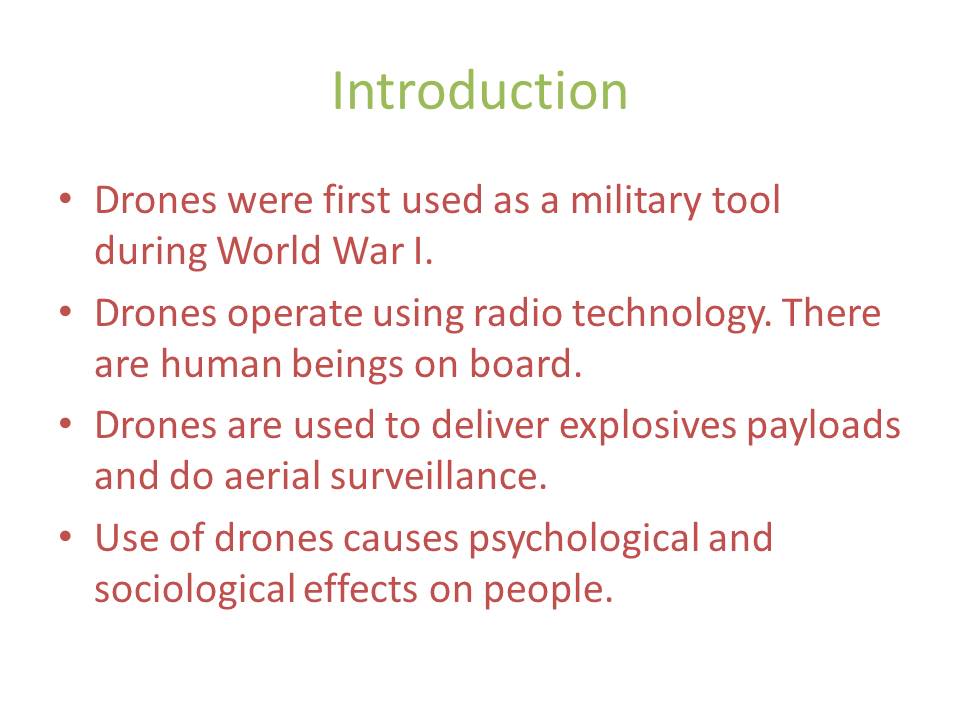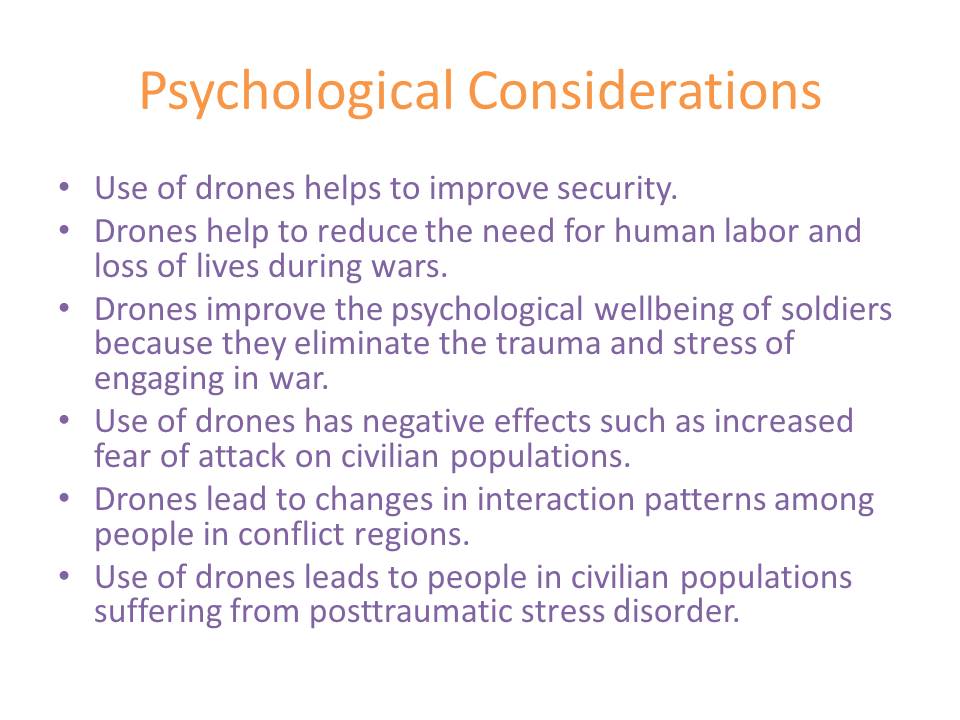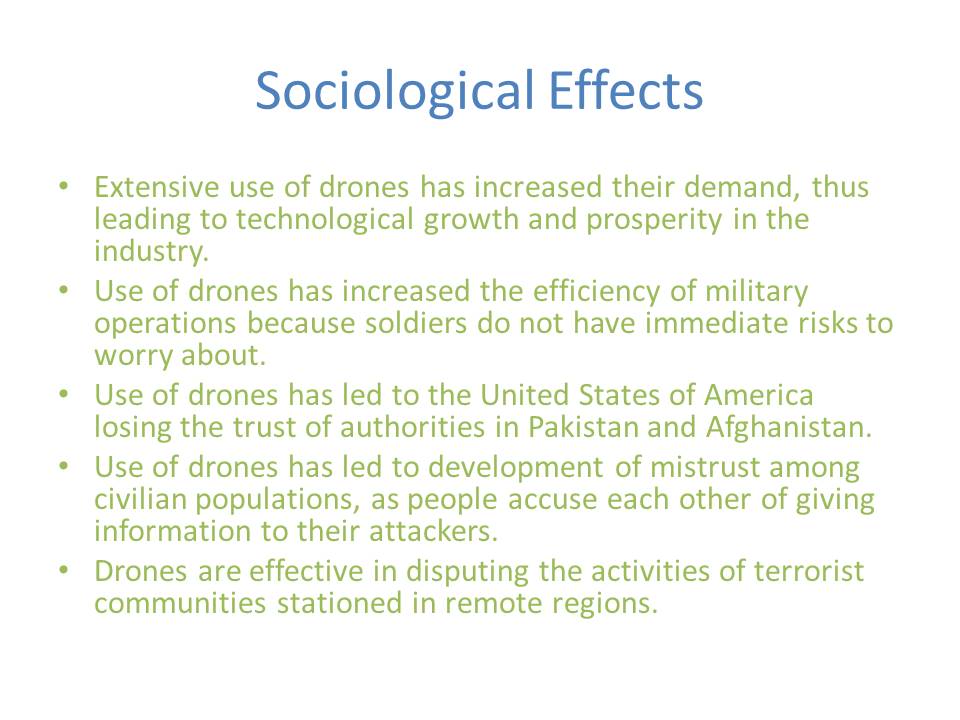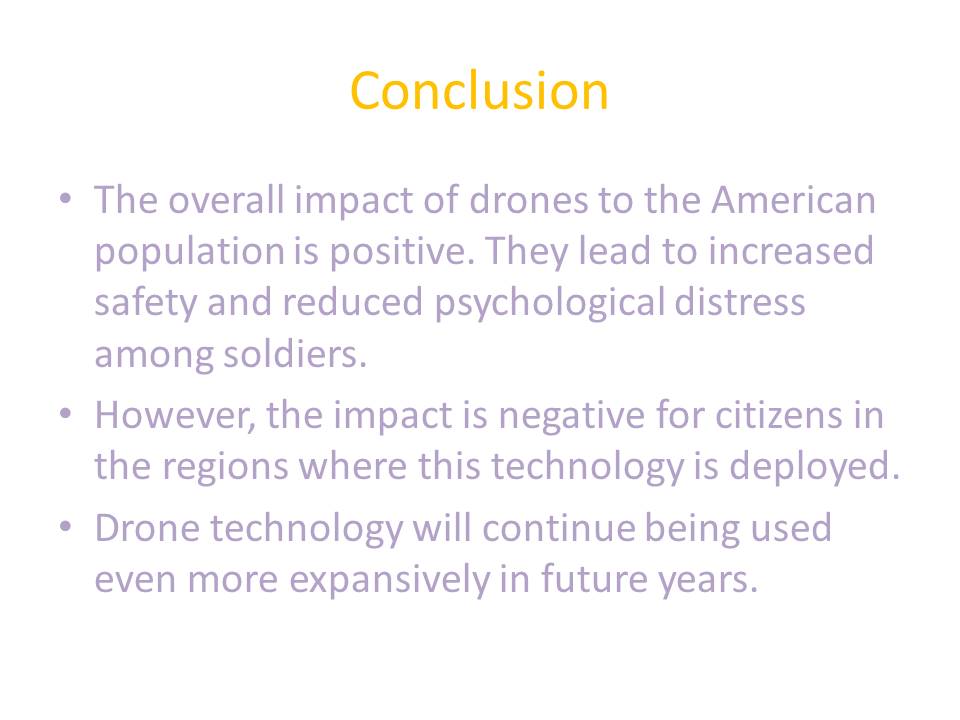Introduction
- Drones were first used as a military tool during World War I.
- Drones operate using radio technology. There are human beings on board.
- Drones are used to deliver explosives payloads and do aerial surveillance.
- Use of drones causes psychological and sociological effects on people.
The United States has made extensive use of drones in the Iraq and Afghanistan.

Psychological Considerations
- Use of drones helps to improve security.
- Drones help to reduce the need for human labor and loss of lives during wars.
- Drones improve the psychological wellbeing of soldiers because they eliminate the trauma and stress of engaging in war.
- Use of drones has negative effects such as increased fear of attack on civilian populations.
- Drones lead to changes in interaction patterns among people in conflict regions.
- Use of drones leads to people in civilian populations suffering from posttraumatic stress disorder.
Drone technology has both positive and negative psychological impacts on people (Strawser, 2010).

Sociological Effects
- Extensive use of drones has increased their demand, thus leading to technological growth and prosperity in the industry.
- Use of drones has increased the efficiency of military operations because soldiers do not have immediate risks to worry about.
- Use of drones has led to the United States of America losing the trust of authorities in Pakistan and Afghanistan.
- Use of drones has led to development of mistrust among civilian populations, as people accuse each other of giving information to their attackers.
- Drones are effective in disputing the activities of terrorist communities stationed in remote regions.
Use of drones encourages civilians to join terrorist groups out of feelings of victimization caused by indiscriminate killings (Anderson, 2013).

Conclusion
- The overall impact of drones to the American population is positive. They lead to increased safety and reduced psychological distress among soldiers.
- However, the impact is negative for citizens in the regions where this technology is deployed.
- Drone technology will continue being used even more expansively in future years.
Drone technology has psychological and sociological effects that should be considered before being used (Pryer, 2013).

References
Anderson, K. (2013). The Case for Drones. Commentary, 135(6), 14-23.
Fair, C.C., Kaltenthaler, K., & Miller, W.J. (2014). Pakistani Opposition to American Drone Strikes. Political Science Quarterly, 129(1), 1-33.
Lifton, R.J. (2013). The dimensions of contemporary war and violence: How to reclaim humanity from a continuing revolution in the technology of killing. Bulletin of the Atomic Scientists, 69(4), 9-17.
Pryer, D. (2013). The Rise of the Machines. Military Review, 93(2), 14-24.
Sluka, J. (2011). Death from Above: UAVs and Losing Hearts and Minds. Military Review, 91(3), 89-95.
Strawser, B.J. (2010). Moral Predators: The Duty to Employ Uninhabited Aerial Vehicles. Journal of Military Ethics, 9(4), 342-368.